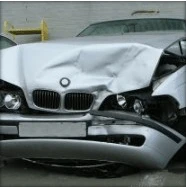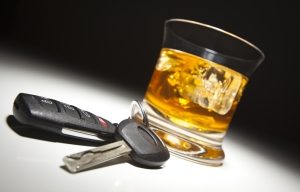
In our final post investigating the crash testing performed by the Insurance Institute for Highway Safety (IIHS), we take a look at two important crash tests. The first involves vehicle underride crashes on large trailers. The second examines bumper height alignment and safety concerns when bumpers do not line up between SUVs and cars.
A few years ago, the IIHS did a study of frontal crashes with vehicles that had a good rating in the frontal crash test. Passengers in those vehicles were belted and had airbag deployments, but were still being injured or killed. A lot of those crashes were into the backs of large trucks, so the Institute decided to look more closely to see what could be done to try and make those crashes more survivable. There is a federal regulation for the guards that have to be put on the rears of large trailers, but it turns out that regulation is not working well to prevent underride crashes. In an effort to compare how different designs do in the exact same crash conditions the IIHS took trailers from the eight largest manufacturers by sales volume in the U.S. and tested each in three different conditions, all at 35 MPH. By doing this, the Institute was able to show that some guards already perform much better than others. All of these trailer underride tests were conducted with the same passenger vehicle: a 2010 Chevy Malibu. This vehicle was chosen because it is a typical mid-sized sedan and is a good performer in frontal crash tests at this speed. What the Institute really wanted to highlight is that it’s the trailer design that needs to be improved and changed, not the passenger vehicle design. For this test, eight brand new semi-trailers were purchased and put into position in the crash hall. Then, measurements of each component of the back of the trailer (frame rails, underride guard, door opening) were taken. Finally, the trailer was loaded with 38,000 pounds of concrete blocks. The trailers were tested in full width, where a car hits the center of the trailer at 35 MPH. They were then tested at 50% overlap, where only half the car hits the trailer, and finally at 30% overlap. Post-crash, the trailer was measured again to determine how far things had bent and moved. After this test, the car was removed from the trailer and placed in the photo studio. In the studio, a detailed analysis is performed to determine dummy contact points inside the vehicle before the door and window openings were measured to determine how far the trailer intruded into the vehicle. Fortunately, manufacturers have been receptive to the testing that the IIHS has been doing because most of them have never been able to see how their guards would perform in a crash test. We can only hope that as manufacturers compare their results to their competitors’ results that they might make improvements on their own initiative. In the long run, there’s a chance that the regulations could be rewritten to require a lot of these improvements regardless of their opinions.
The bumper height testing was conducted by the IIHS in a series of 10 MPH front into rear crashes of small SUVs and cars. Seven pairs of vehicles were chosen, each pair produced by the same manufacturer. This is because at a minimum, the manufacturer should be able to control the bumper heights of their own fleet and ensure that they are compatible. There is a federal standard for car bumpers requiring that bumpers be 16-20 inches from the ground and be able to withstand a 2.5 MPH impact without damage to lights or other safety equipment. When SUVs first hit the market, they truly were off-road vehicles and because of this, they were exempt from the federal bumper standards. But today, SUVs are the people-mover of choice. SUVs are used to commute to and from work, take kids to school, and go on vacation. Unfortunately, the bumpers on these vehicles are still unregulated and because of that, they produce a lot of damage when they crash into cars. Results from this series of 10 MPH front into rear crashes of SUVs and cars shows what happens when bumpers don’t line up. In a test where the Toyota Corolla struck the back of the Toyota Rav4, there was almost $10,000 in damage. In another example, over $7,000 damage was caused when the Nissan Rogue struck the back of the Nissan Sentra. There was so much damage that the Rogue was un-drivable after the crash. The Ford Escape has the highest bumper of any of the SUVs tested by the IIHS. When bumpers are lined up, the bumpers can do their job and minimize damage done to other parts of the vehicle.
At Jones & Swanson, we work on automobile accident injury claims every day. For this reason, we are supporters of increased safety standards for all vehicles, from small passenger cars to tractor trailers.
Categories: Car Accident, Personal Injury




